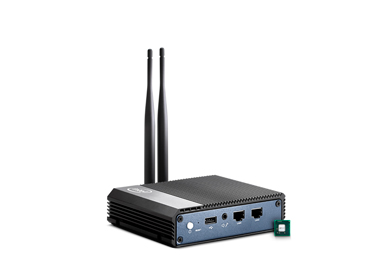Shenzhen in China is firmly on Intel’s expansion map. Intel Corporation Chief Executive Officer (CEO) Brian Krzanich on Tuesday announced the company’s plans to build upon its nearly 30-year history in China, and collaborate with the growing technology ecosystem, particularly in Shenzhen, to accelerate new innovation and reshape the computing industry.
The Intel CEO announced the Intel Smart Device Innovation Center in Shenzhen and US$100 million Intel Capital China Smart Device Innovation Fund to accelerate smart device innovation including 2 in 1s, Tablets, smartphones, wearables and the Internet of Things (IoT).
During his keynote speech at the Intel Developer Forum, 2014, in Shenzhen, Krzanich spoke of how Intel and the Shenzhen technology ecosystem could re-ignite growth – both locally and globally – and deliver differentiated computing products and experiences, spanning multiple market segments, operating systems and price points.
Intel’s CEO also detailed several new products and technologies the company will begin offering this year, including Intel Edison, a product-ready, general-purpose computing platform first imagined in the company’s research labs in China. He also announced availability of the Intel Gateway Solutions for the IoT based on Intel Quark and Atom processors, and demonstrated for the first time SoFIA, Intel’s first integrated mobile SoC platform for entry and value smartphones and Tablets.
Krzanich was joined on the opening day of its annual developer forum by Ian Yang, President of Intel China, who kicked off the two-day conference, and Diane Bryant, senior Vice President and General Manager of Intel’s Data Center Group, whose keynote outlined Intel’s data centre technologies as the foundation of modern computing and emerging business opportunities presented by the growth of smart, connected devices.
“The China technology ecosystem will be instrumental in the transformation of computing,” said Krzanich. “To help drive global innovation, Intel will stay focused on delivering leadership products and technologies that not only allow our partners to rapidly innovate, but also deliver on the promise that ‘if it computes, it does it best with Intel’ – from the edge device to the cloud, and everything in between.”
The Intel Smart Device Innovation Center in Shenzhen will expand Intel’s work beyond Tablets and provide local OEMs, ODMs, and software developers with access to Intel technology platforms and enabling support, including master reference designs for turnkey solutions, development tools, supply chain sourcing, quality management and customer support – acting as a bridge between product conception and commercial deployment.
Meanwhile, Intel claimed the $100 million Intel Capital China Smart Device Innovation Fund “reinforces Intel Capital’s commitment to the China IT industry and ecosystem development.” Since 1998, Intel Capital has invested more than US$670 million in 110 companies in China across two already-established investment funds.
Enabling the Growing Internet of Things
Intel said it was actively pursuing a range of solutions, from the edge device to the Cloud, to address the growing opportunities presented by IoT.
Krzanich’s announcement of the availability of the Intel Gateway Solutions for IoT, was likely to help businesses reduce costs and offer new services by unlocking valuable data from legacy systems that traditionally haven’t had a means to communicate with each other and the Cloud.
During her keynote address, Bryant shared how Intel’s data centre technologies were the foundation for modern computing, and that the opportunity to collaborate and drive local and global innovation was just getting started. As companies shifted to the rapid delivery of digital services, new demands are placed on the data centre, creating opportunities for new innovations from partners. The three key growth areas in particular are the Cloud, big data analytics and high performance computing.
Bryant was joined by Xuefeng Yuan, director of the Guangzhou Supercomputing Center to showcase how high performance computing technologies were improving society and increasing economic growth.
Image Credit: Intel
– Advertising Message –


